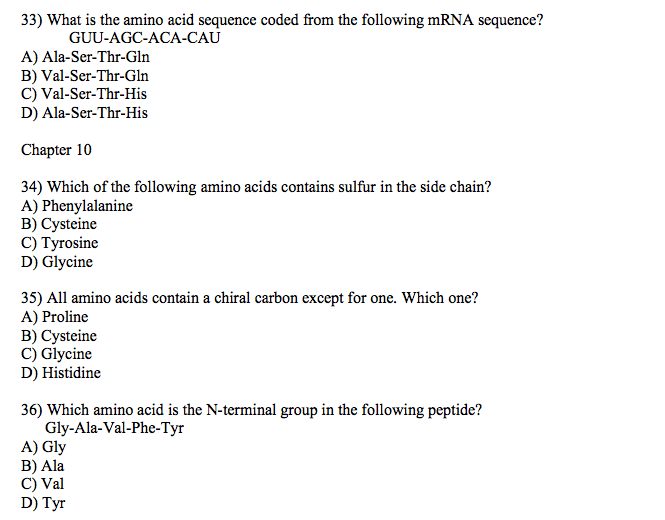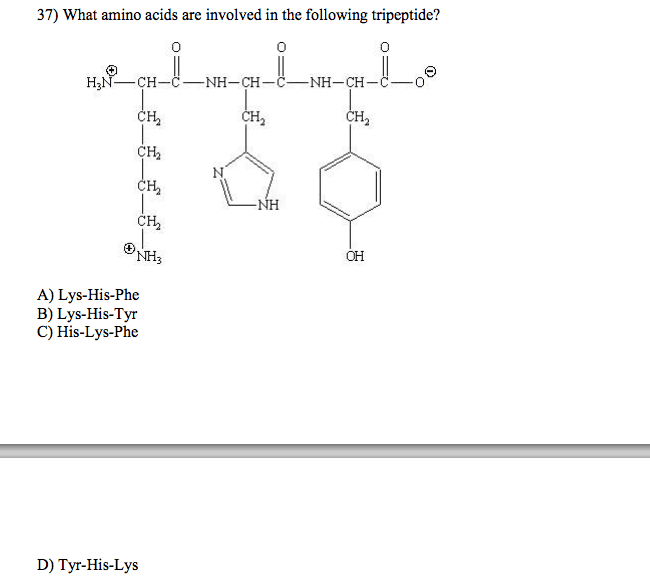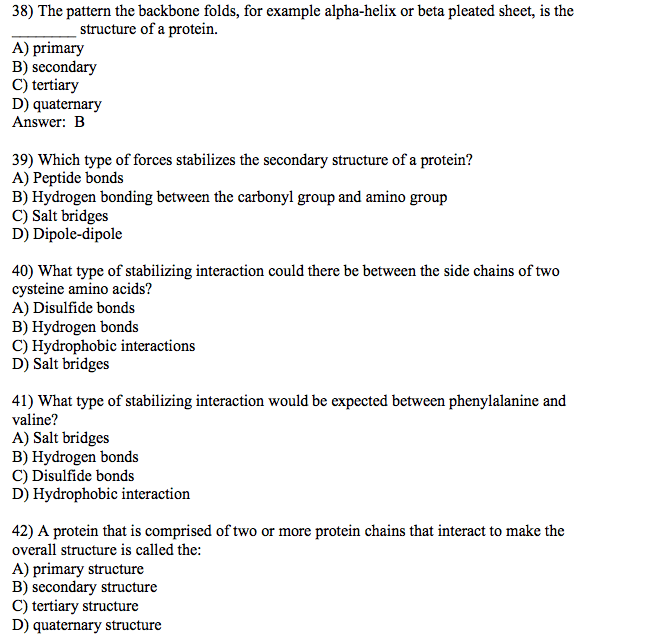CHE 211 Study Guide - Final Guide: Peptide, Covalent Bond, Amine

Organic Chemistry 2: Proteins
An Overview of Protein Structure and Function
Types of Protein Structure and Their Interrelationships
1) Primary Structure
▪ Amino acid sequence
▪ Results from formation of covalent peptide bonds between amino acids
2) Secondary Structure
o This describes how segments of peptide backbone orients itself into a regular
pattern (this regular pattern is of amino acids near each other in the protein
chain that results from hydrogen bonding between the carbonyl group (oxygen
atom) and the amino group (nitrogen atom))
o Includes α-helix and β-sheet
o Hydrogen bonding between amide hydrogens and carbonyl oxygens of the
peptide bonds
o In α-helix, the hydrogen bond forms between every 4th amino acid
o In β-sheet, hydrogen bonds form between 2 side by side chains or by a single
chain that has folded back on itself
3) Tertiary Structure
θ This level of organization describes how the entire protein molecule coils into an
overall 3-D shape
θ This is the result of the interactions that hold the tertiary structure together,
such as hydrogen bonding, disulfide bonds, salt bridges, hydrophobic
interactions
θ Overall folding of the entire polypeptide chain
θ Interactions between different amino acid side chains
4) Quaternary Structure
Describes how different protein molecules come together to yield large
aggregate structures
The forces responsible for holding the quaternary structure together include: salt
bridges, hydrogen bonds, disulfide bridges, hydrophobic interactions and Van
der Waals forces
Concerned with topological, spatial arrangement of two or more polypeptide
chains
Involves both disulfide bridges and non-covalent interactions
Protein Functions Follow Shape
It is the tertiary and quaternary structures of the protein that defines its function; this
implies function follows shape
Fibrous proteins:
find more resources at oneclass.com
find more resources at oneclass.com
Document Summary
Includes -helix and -sheet: hydrogen bonding between amide hydrogens and carbonyl oxygens of the peptide bonds. In -helix, the hydrogen bond forms between every 4th amino acid. In -sheet, hydrogen bonds form between 2 side by side chains or by a single chain that has folded back on itself: tertiary structure. This level of organization describes how the entire protein molecule coils into an overall 3-d shape. This is the result of the interactions that hold the tertiary structure together, such as hydrogen bonding, disulfide bonds, salt bridges, hydrophobic interactions. Overall folding of the entire polypeptide chain. Interactions between different amino acid side chains: quaternary structure. Describes how different protein molecules come together to yield large aggregate structures. The forces responsible for holding the quaternary structure together include: salt bridges, hydrogen bonds, disulfide bridges, hydrophobic interactions and van der waals forces. Concerned with topological, spatial arrangement of two or more polypeptide chains. Involves both disulfide bridges and non-covalent interactions.




